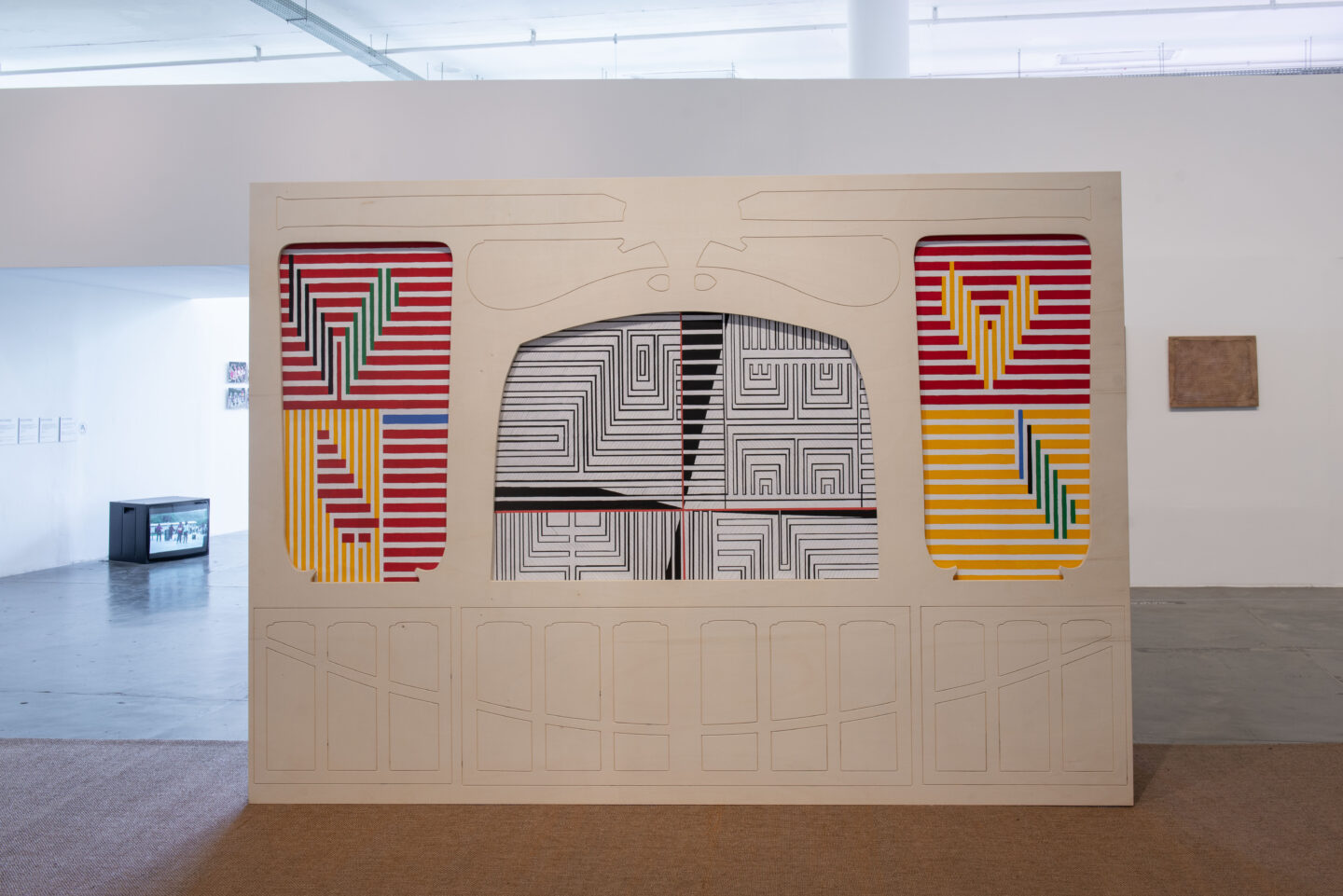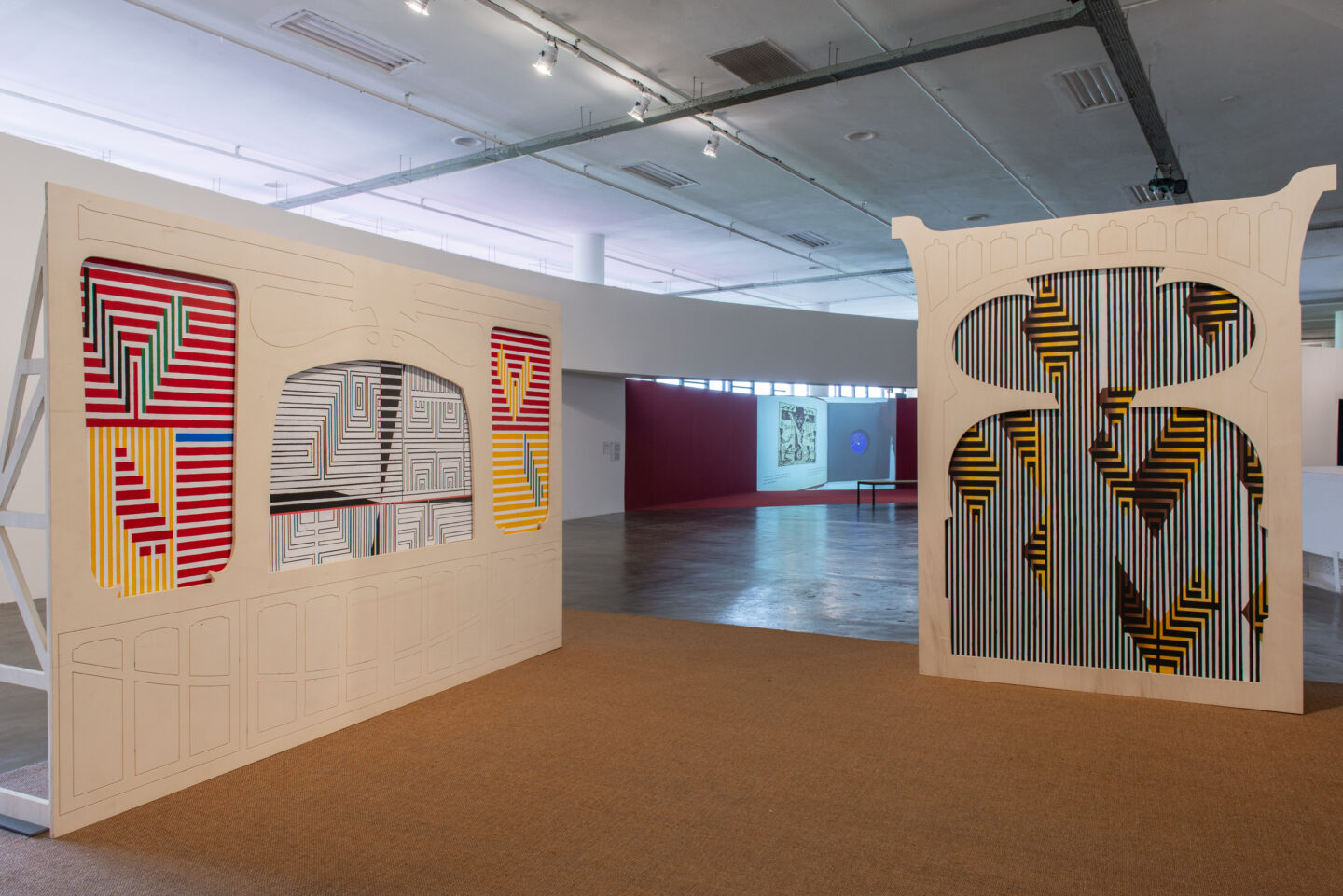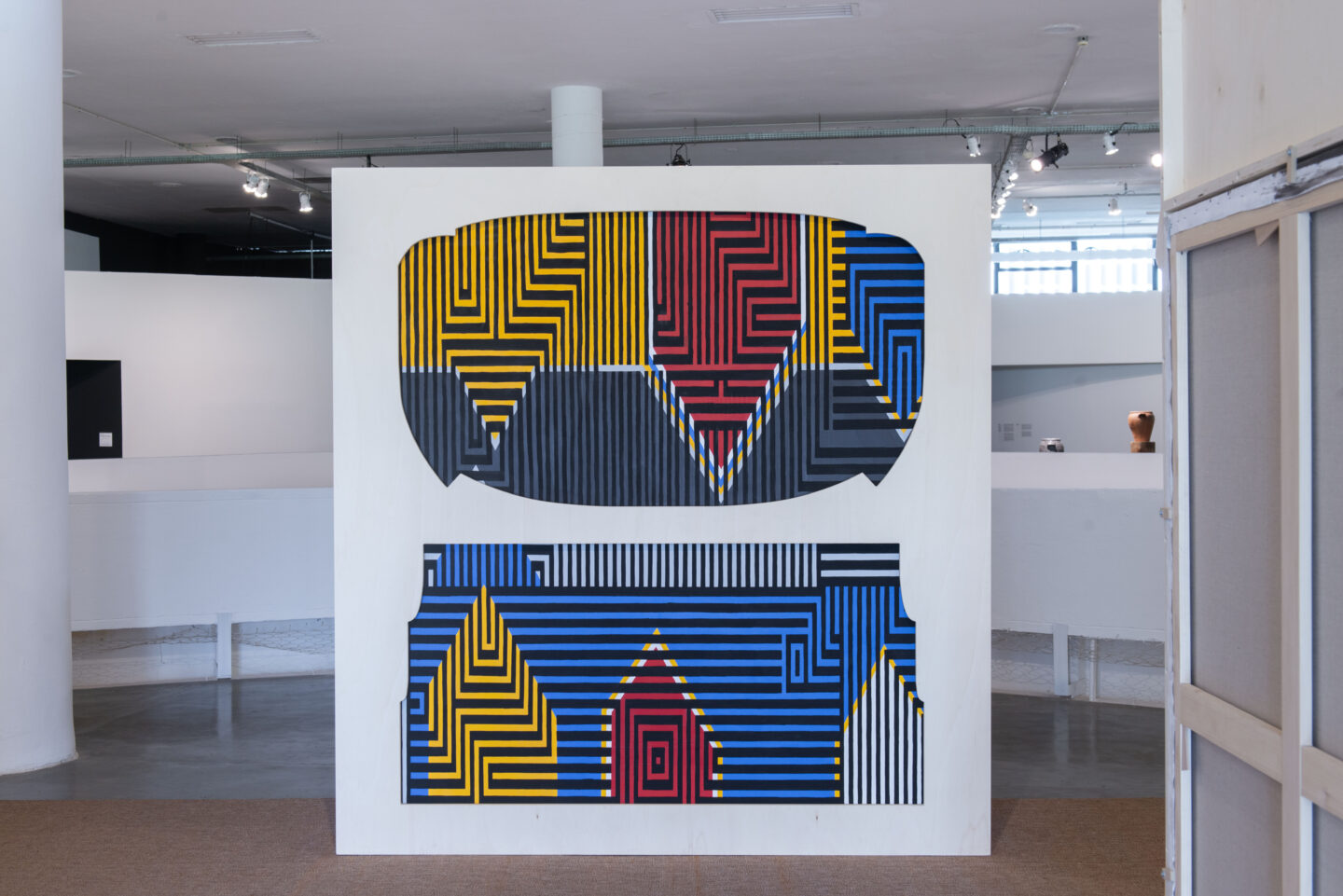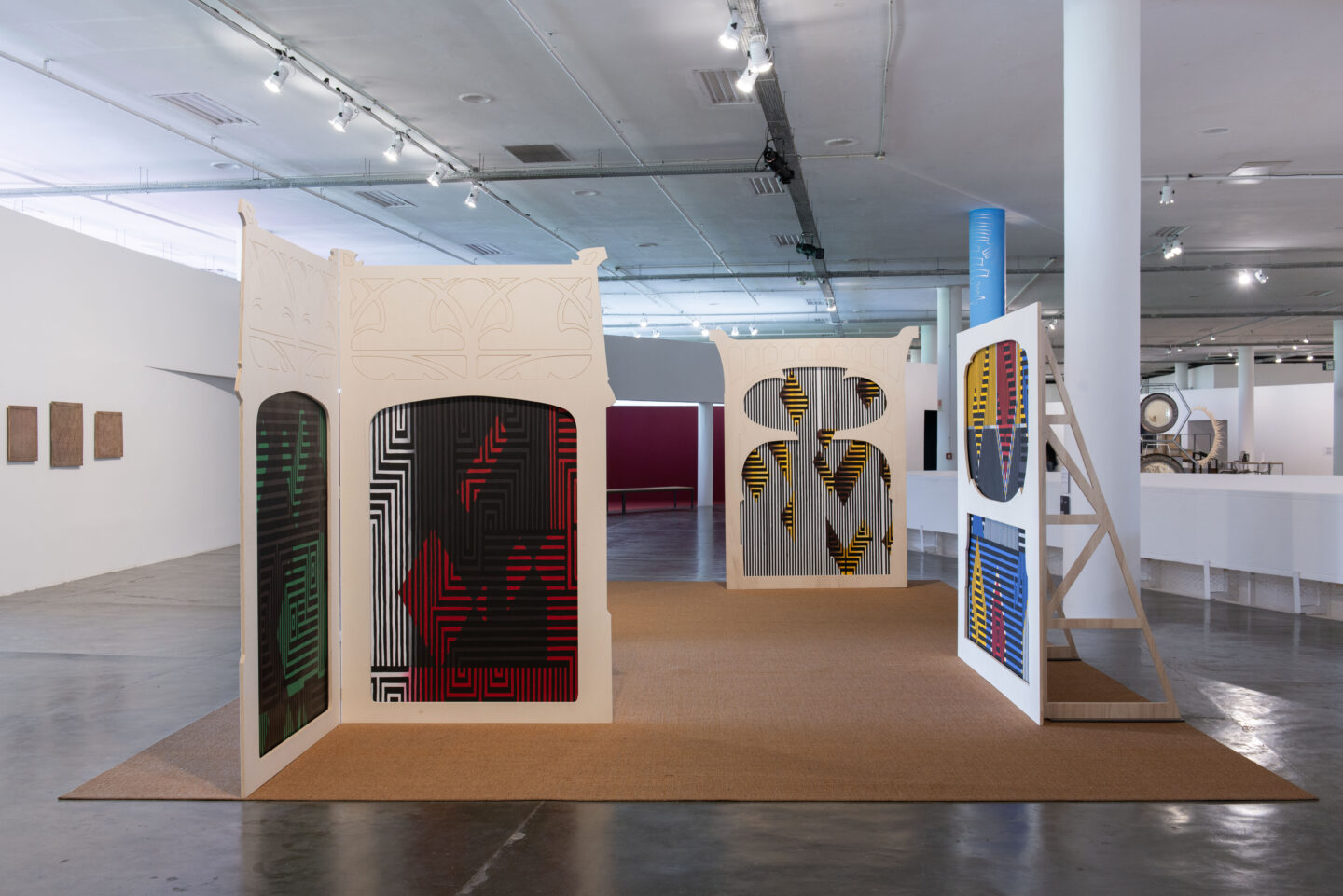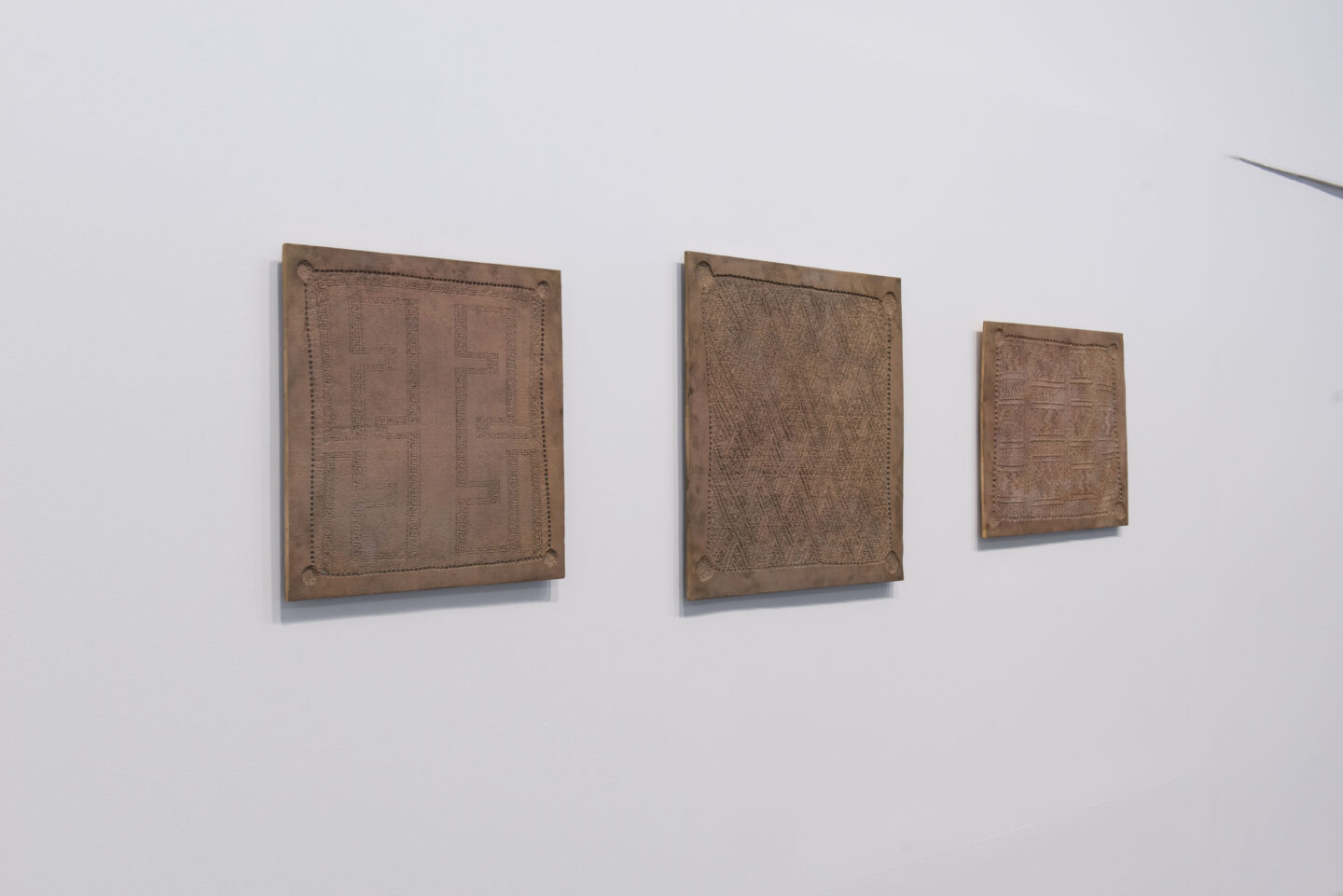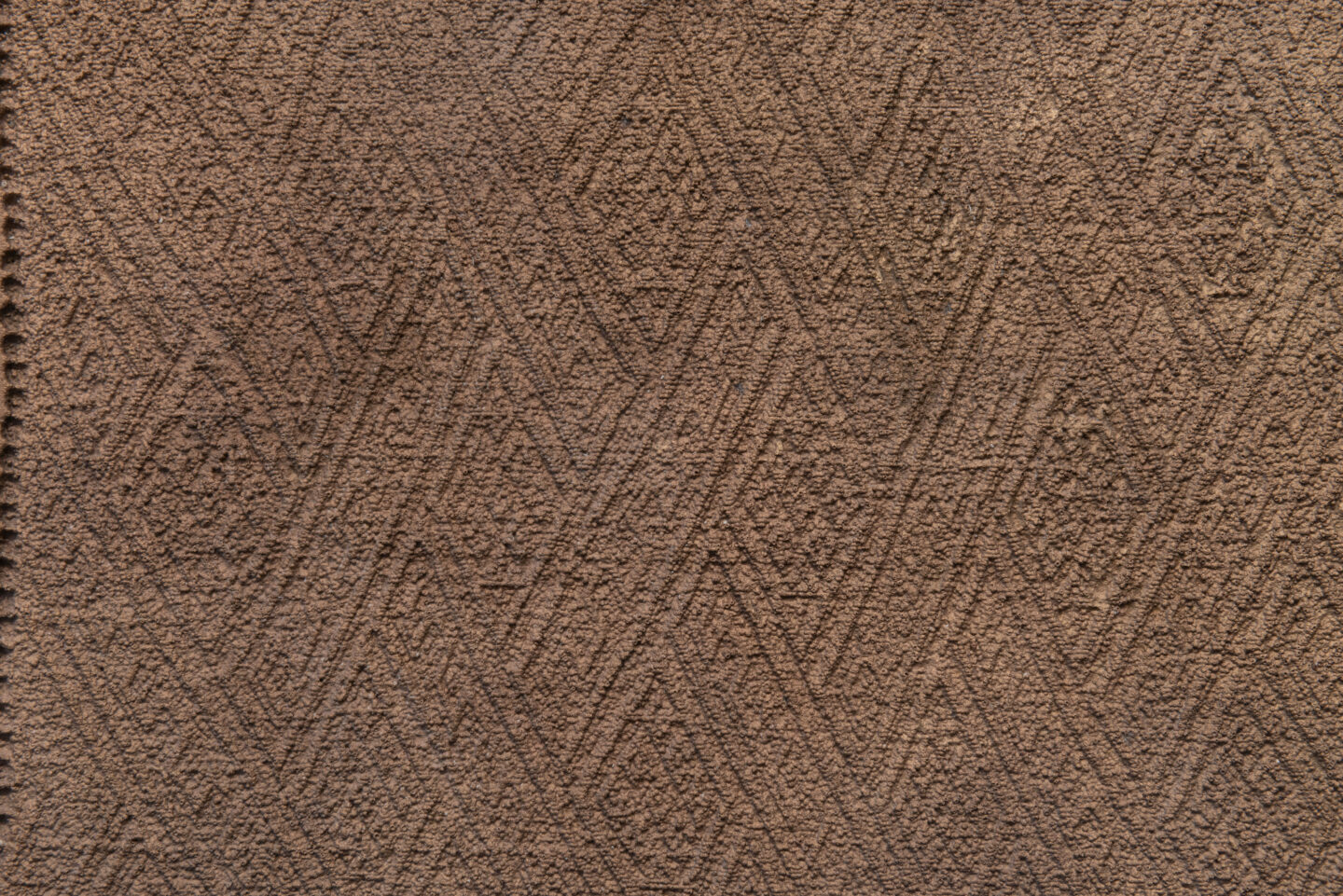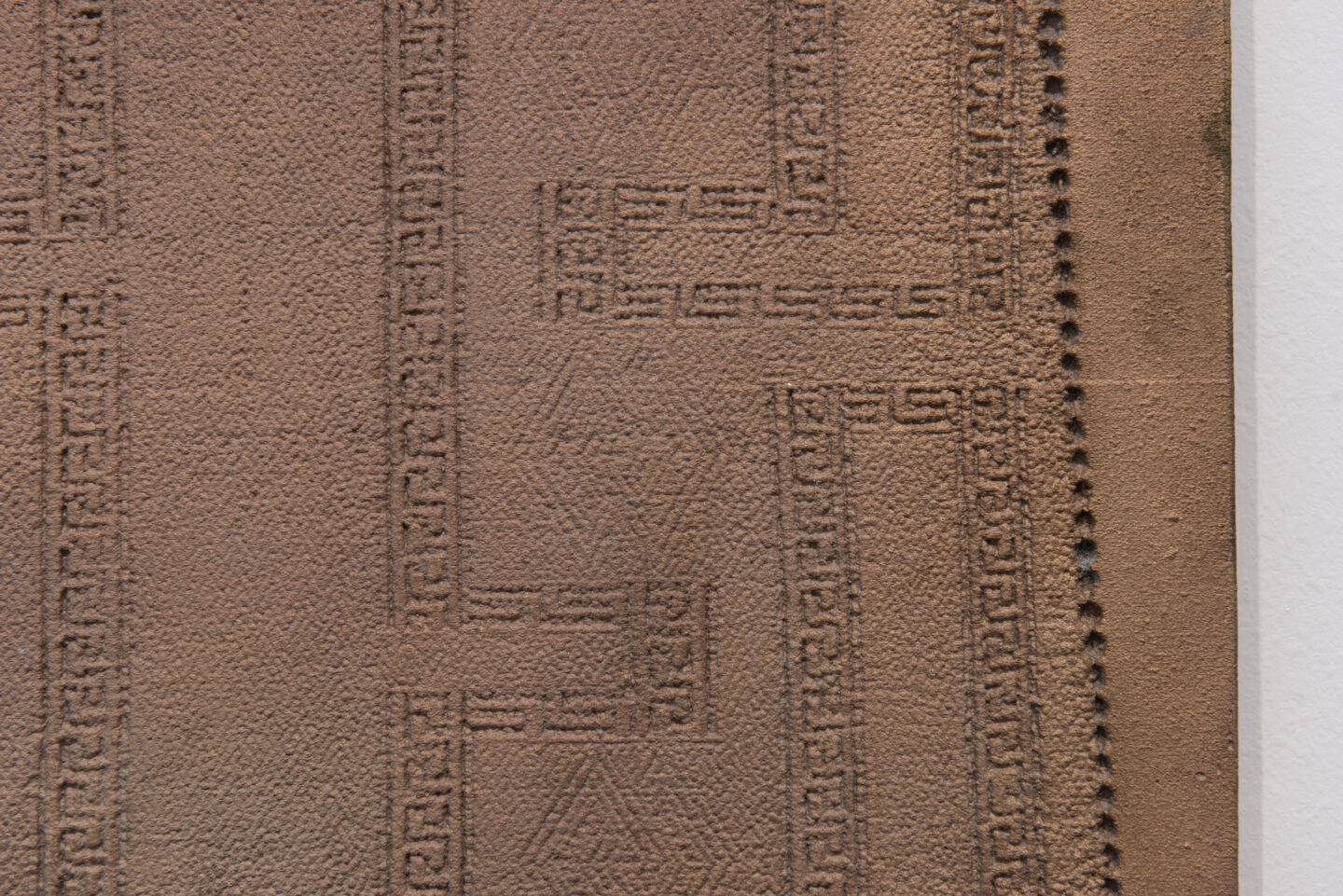
Sammy Baloji
One hundred and thirty years ago, work on the Hotel Tassel was completed in Brussels, Belgium. Thus, Art Nouveu was born. A style that celebrated modernity and its leading class, the industrial bourgeoisie that had amassed enormous wealth by intertwining its destiny with that of the colonial affair.
In Hobé’s Art Nouveau Forest and Its Lines of Color (2021), Sammy Baloji reproduces an Art Nouveau-style display, incorporating some patterns inspired by the Congolese textile tradition. Similar patterns, in fact, were once integrated into the design of the Royal Museum for Central Africa, in Tervuren, Belgium, not to mention that architecture and objects often made use of materials from the Congolese colony: copper, ivory, and wood. It is this connection between the floral style of Art Nouveau and colonial dispossession that Baloji emphasizes. Not only that, the colors the artist chooses are the same colors that writer and historian W.E.B Dubois had used for the diagrams exhibited at the Exhibit of American Negroes during the 1900 Universal Exhibition in Paris. This choice, according to the artist, alludes to the idea “to divert the ethnographic reading that one could have had of these works by emphasizing the modern aspect of these ancient practices.”¹ The colonial archive is probed to break the Western monopoly on modernity.
Thus, two colonial liturgies, Christian mass and factory work, are featured in the film Tales of the Copper Crosses Garden: Episode I (2017). Here, images of a copper processing plant in Katanga province (Democratic Republic of Congo) are accompanied by a recording of colonial-era Christian praises. The songs are sung by the Congolese choir of the Singers at The Copper Cross. In a black-and-white photograph that Baloji juxtaposes with the film, the aforementioned copper cross, also known as Katanga Cross, adorns the cassock robes of the choristers. That type of cross, however, was used as currency in the region as early as the 13th century. Detail that, once again, demonstrates the artist’s ability to lay bare the hidden nexuses of colonialism, this time those between religion, extractivism, and economics.
marco baravalle
1. Portfolio of the artist. Available here.
- Vista da obra Hobé’s Art Nouveau Forest and Its Lines of Color [A floresta art nouveau de Hobé e suas linhas de cor], de Sammy Baloji na 35ª Bienal de São Paulo – coreografias do impossível © Levi Fanan / Fundação Bienal de São Paulo
- Vista da obra Hobé’s Art Nouveau Forest and Its Lines of Color [A floresta art nouveau de Hobé e suas linhas de cor], de Sammy Baloji na 35ª Bienal de São Paulo – coreografias do impossível © Levi Fanan / Fundação Bienal de São Paulo
- Vista da obra Hobé’s Art Nouveau Forest and Its Lines of Color [A floresta art nouveau de Hobé e suas linhas de cor], de Sammy Baloji na 35ª Bienal de São Paulo – coreografias do impossível © Levi Fanan / Fundação Bienal de São Paulo
- Vista da obra Hobé’s Art Nouveau Forest and Its Lines of Color [A floresta art nouveau de Hobé e suas linhas de cor], de Sammy Baloji na 35ª Bienal de São Paulo – coreografias do impossível © Levi Fanan / Fundação Bienal de São Paulo
- Vista da obra Hobé’s Art Nouveau Forest and Its Lines of Color [A floresta art nouveau de Hobé e suas linhas de cor], de Sammy Baloji na 35ª Bienal de São Paulo – coreografias do impossível © Levi Fanan / Fundação Bienal de São Paulo
- Vista da obra Hobé’s Art Nouveau Forest and Its Lines of Color [A floresta art nouveau de Hobé e suas linhas de cor], de Sammy Baloji na 35ª Bienal de São Paulo – coreografias do impossível © Levi Fanan / Fundação Bienal de São Paulo
- Vista da obra Hobé’s Art Nouveau Forest and Its Lines of Color [A floresta art nouveau de Hobé e suas linhas de cor], de Sammy Baloji na 35ª Bienal de São Paulo – coreografias do impossível © Levi Fanan / Fundação Bienal de São Paulo
- Vista da obra Copper Negative of Luxury Cloth Kongo People; Democratic Republic of the Congo, Republic of the Congo or Angola, 17th-18th Century [Negativo de cobre de tecido de luxo dos povos Kongo; República Democrática do Congo, República do Congo ou Angola], de Sammy Baloji na 35ª Bienal de São Paulo – coreografias do impossível © Levi Fanan / Fundação Bienal de São Paulo
- Detalhe da obra Copper Negative of Luxury Cloth Kongo People; Democratic Republic of the Congo, Republic of the Congo or Angola, 17th-18th Century [Negativo de cobre de tecido de luxo dos povos Kongo; República Democrática do Congo, República do Congo ou Angola], de Sammy Baloji na 35ª Bienal de São Paulo – coreografias do impossível © Levi Fanan / Fundação Bienal de São Paulo
- Detalhe da obra Copper Negative of Luxury Cloth Kongo People; Democratic Republic of the Congo, Republic of the Congo or Angola, 17th-18th Century [Negativo de cobre de tecido de luxo dos povos Kongo; República Democrática do Congo, República do Congo ou Angola], de Sammy Baloji na 35ª Bienal de São Paulo – coreografias do impossível © Levi Fanan / Fundação Bienal de São Paulo
- Vista da obra Tales of the Copper Cross Garden, Episode 1 [Contos do Jardim das Cruzes de Cobre, episódio 1], de Sammy Baloji na 35ª Bienal de São Paulo – coreografias do impossível © Levi Fanan / Fundação Bienal de São Paulo
Sammy Baloji (Lubumbashi, Democratic Republic of the Congo, 1978. Lives between Lubumbashi and Brussels, Belgium) draws inspiration from the daily life of Congolese people and expresses this artistic concern through photography. Baloji does so by exploring his country’s present and retelling its history through the view of its people. Among his current focuses are ethnography, architecture, and urbanism. He analyzes African identity today by studying Congolese past and drawing his knowledge from all the political systems that the society has experienced. He often combines archival photographs with his own shots of the people and places bearing the marks of colonialism. His work was featured in the 18th International Architecture Exhibition – La Biennale di Venezia (Italy) and is part of the collection of the Tate Modern (London, UK).

 Português
Português

